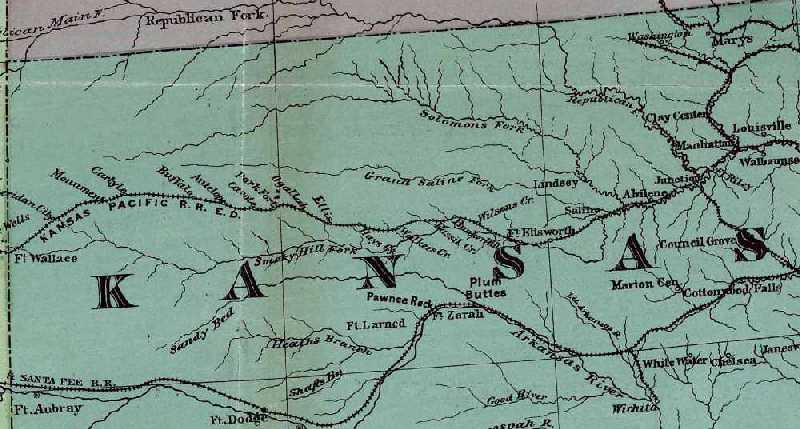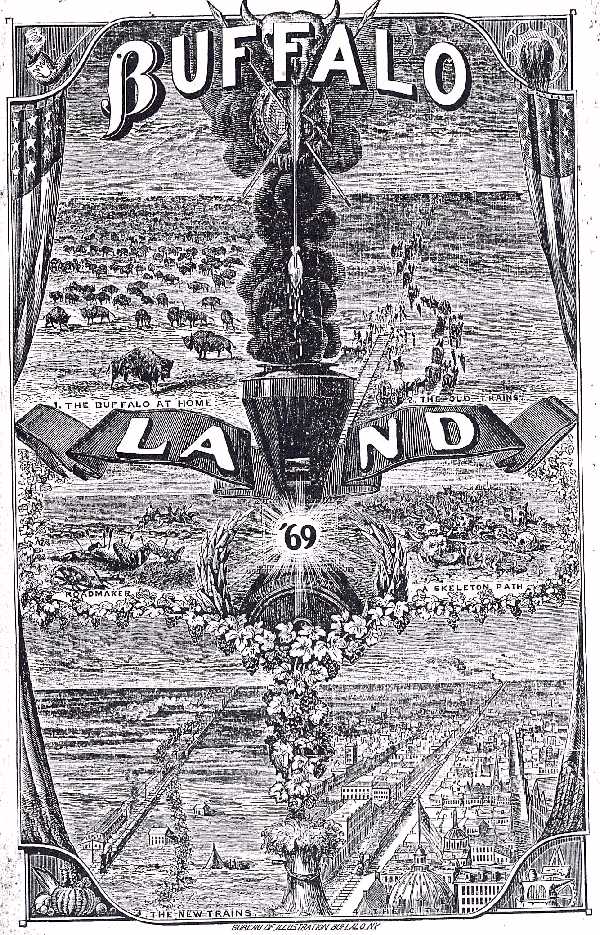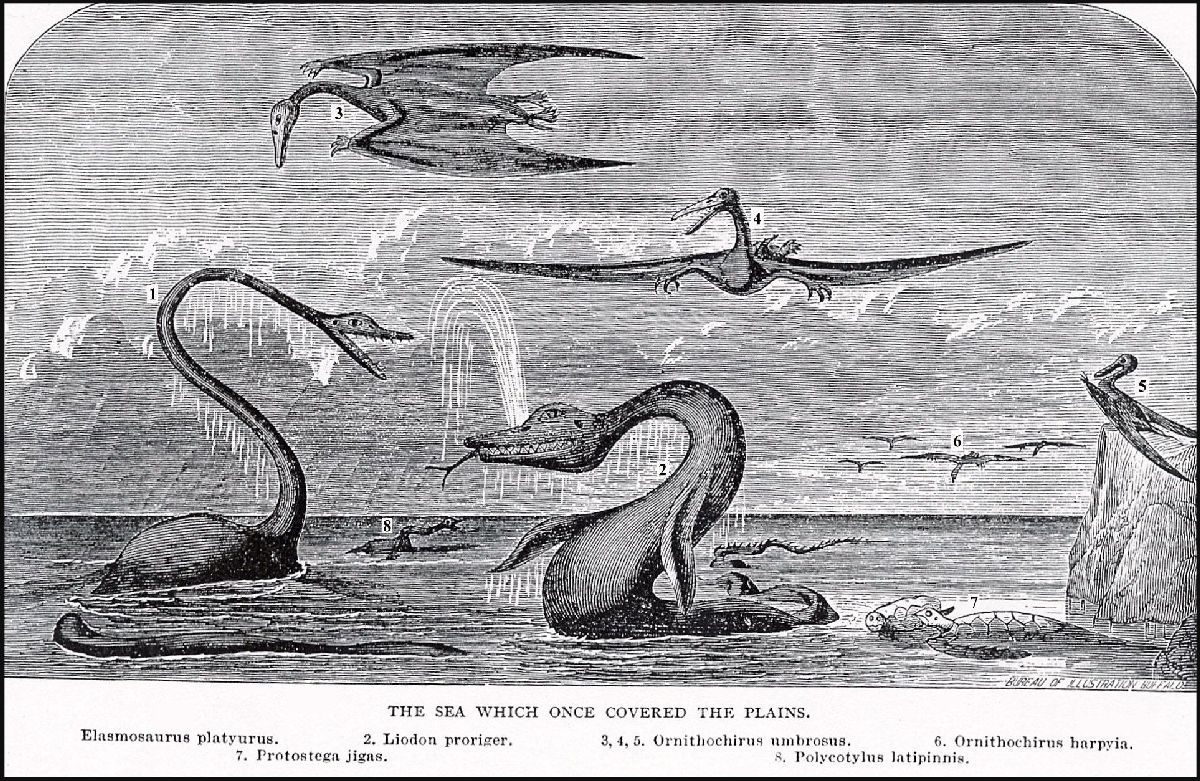Buffalo Land
By
W. E. Webb,
OF TOPEKA, KANSAS.
AN IMPORTANT DISCOVERY
325
Louis was a wiry little Gaul, very positive in his ideas
about everything. An animated conversation sprang up at once between him and the
Professor, and it soon became amusingly evident that his geological ideas did not entirely
accord with those of the Philosopher. A sudden turn in the colloquy developed a fact
of keen interest to even the most unscientific member of our party.
Pointing to the other side of the valley, Louis told us
that there lay the bones on an immense snake, all turned to stone. This sudden voice from
the past ages sounded in the Professor's ears like the blare of the trumpet to a warrior.
He hurried us forward in the direction indicated, and, locking arms with the
bloody-shirted little Frenchman, strode on in advance. I wish his class could have seen
him thus traversing the desolate bed where that old sunken volcano went to sleep. We were
glad that the latter was still asleep, and and never acquired the habit of snorting into
wakefulness, and pelting explorers with hot rocks.
What mysteries, I have often thought, might we not
discover, on looking down the throat of a healthy volcano, if some wise alchemist could
only brew a dose sufficiently powerful to stop the fiery fellow's foaming at the mouth!
Or, better still, if it could, reach the bowels of the earth, and keep the whole
system quiet, while we, puny mortals, like trichina mites, swarmed down the interior, and
bored scientifically back to the crust again. Earth's veins run golden blood, and we
might be gorged with that, perhaps, ere making the exit into the sunshine again.
A shout from the further edge of the ravine cut short our
326
BUFFALO LAND
speculations, and called our attention to the Professor. He stood waving his
slouched hat for an instant, then bent close over the ground, in earnest scrutiny.
A few moments later, and we all stood beside the huge
fossil. It lay exposed, upon a bed of slate, looking very much like a seventy-foot
serpent, carved in stone. Part of the remains had been taken up to the town, and spread
over the bench, in the shop of Louis. From what was left, the jaws appeared to be
over six feet long, the sharp hooked and cone-shaped teeth being still very perfect. A few
broad fragments of ribs showed that, in circumference, the animal's body had been about
the size of a puncheon. We felt confident that the specimen was a very rare one, as Muggs
had never seen anything like it, even in England. It now rests in the museum at Cambridge,
Massachusetts.
"This fossil, gentleman," said the Professor,
is that of a Mosasaurus, a huge reptile which existed in the cretaceous sea. This
appears to be one of the largest members of the family yet discovered, its length, as you
will perceive, being over fifty feet. The species to which it belonged swarmed in
immense numbers, but were surrounded by monsters even more remarkable than they. The
deep which they inhabited must have been constantly lashed and torn with their fierce
conflicts; for it was an age of war, and the powers of offense and defense, which the
monsters of the period possessed, were terrible. Winged reptiles filled the air, in
appearance more hideous than any creation of the imagination. |


 Plate from Webb's 1872 Buffalo
Land. The artist is unknown but it is likely he was coached by E.D. Cope
since all of the extinct animals in the picture were named by Cope from the Smoky Hill
Chalk of Western Kansas. Webb's book does include two chapters written by Cope that he
also published in 1872 in a USGS Report. See Davidson, 2003.
Plate from Webb's 1872 Buffalo
Land. The artist is unknown but it is likely he was coached by E.D. Cope
since all of the extinct animals in the picture were named by Cope from the Smoky Hill
Chalk of Western Kansas. Webb's book does include two chapters written by Cope that he
also published in 1872 in a USGS Report. See Davidson, 2003.
